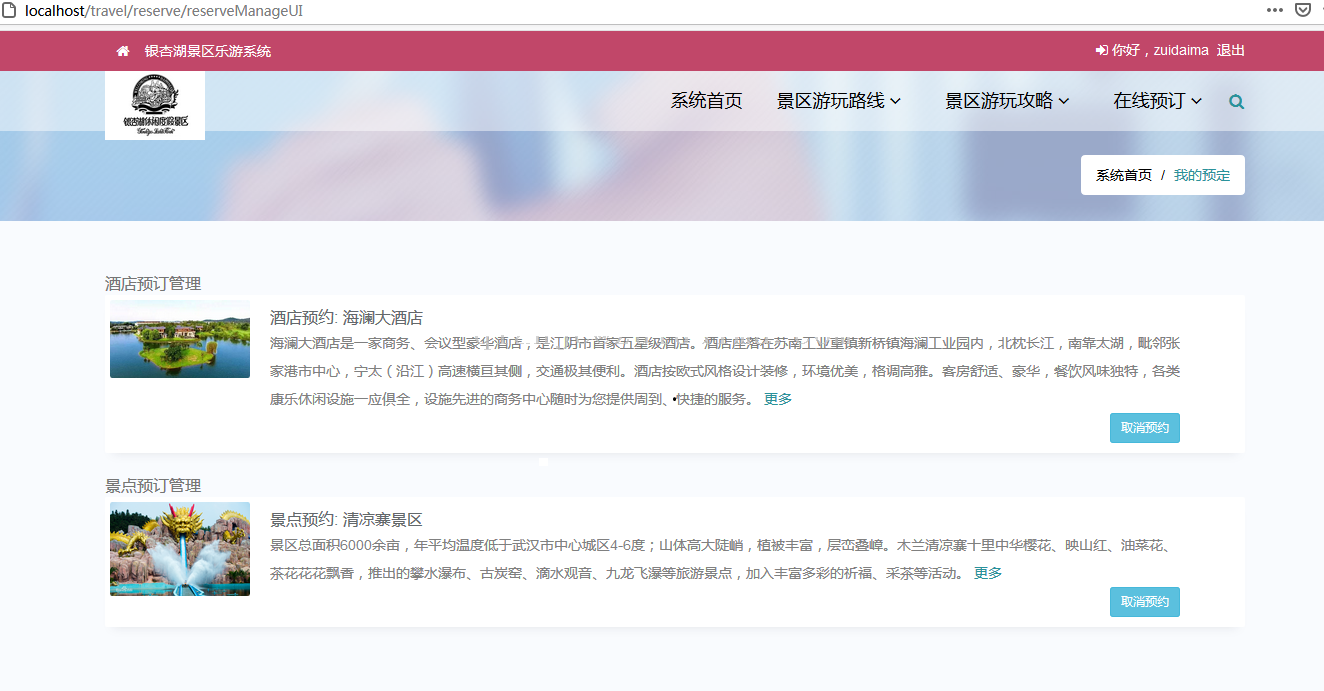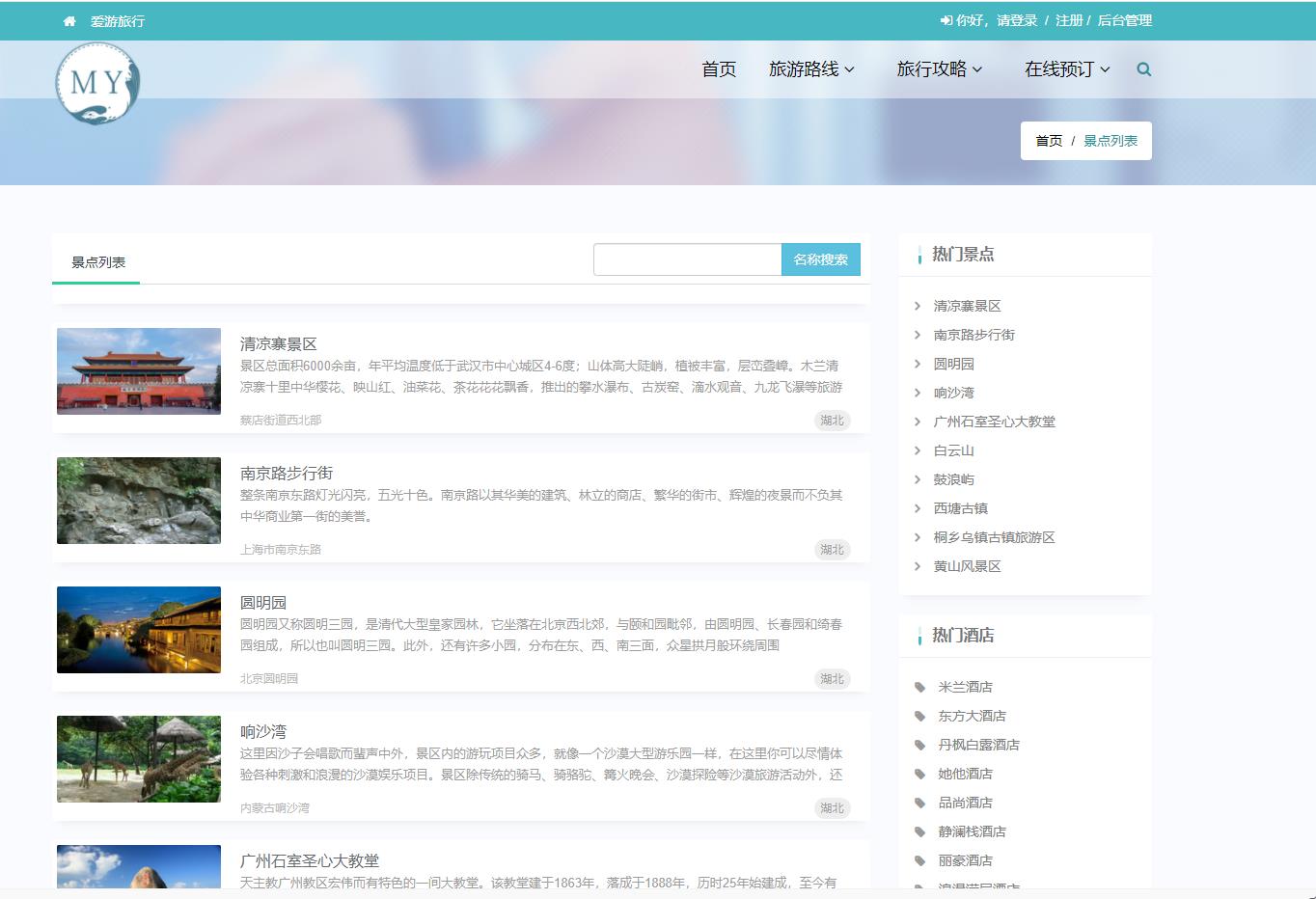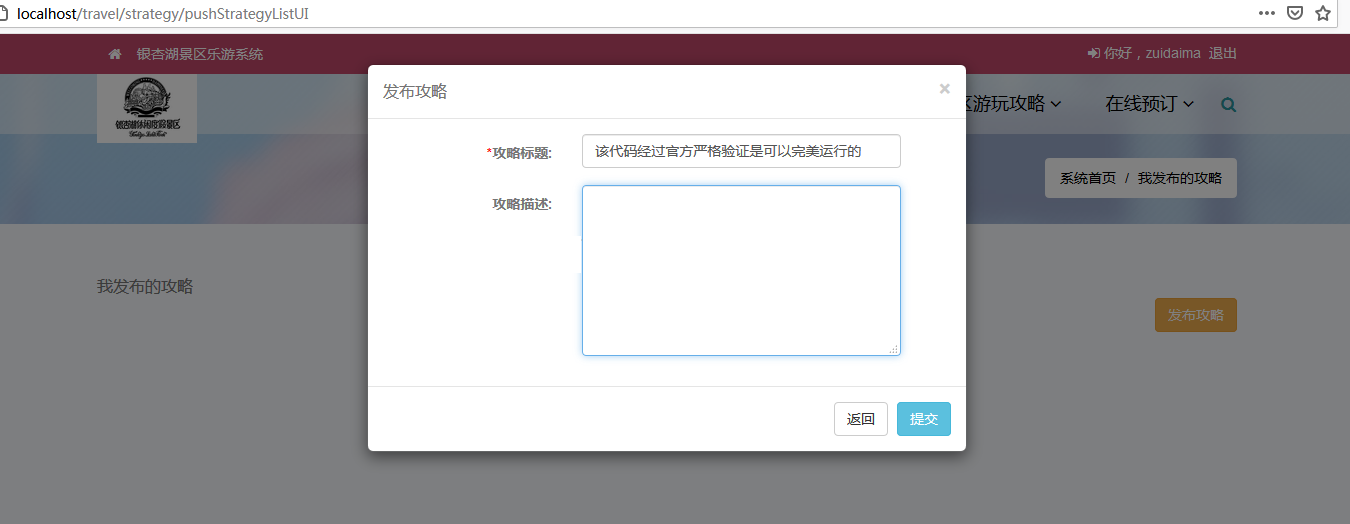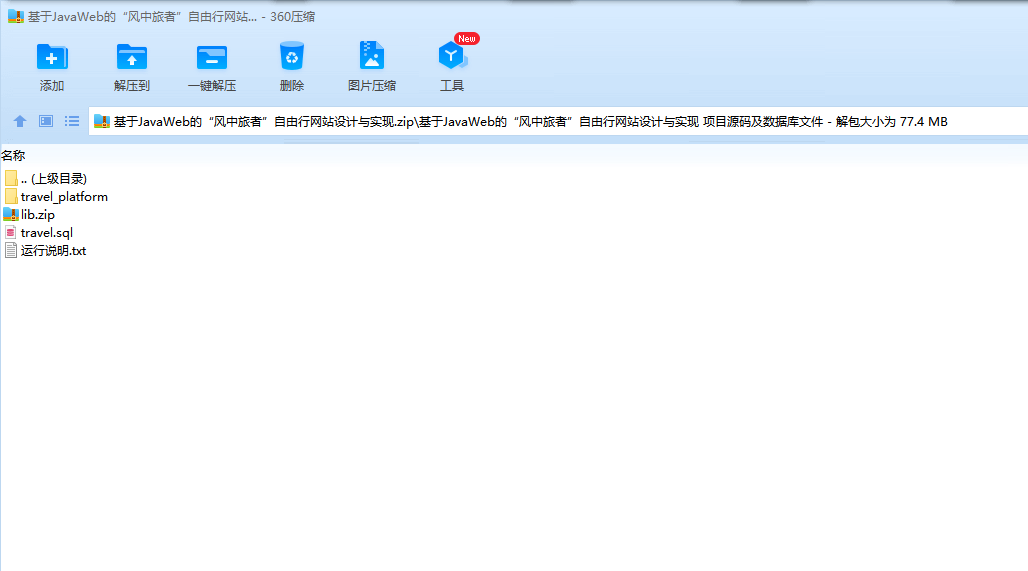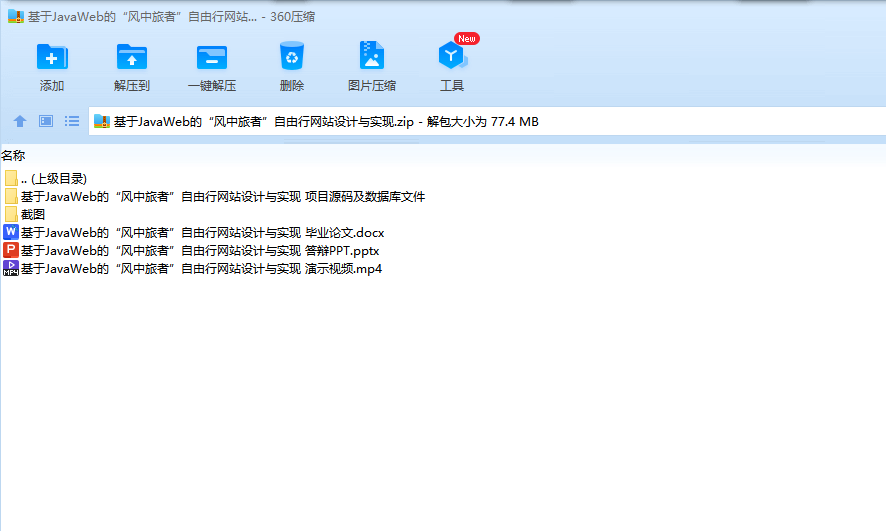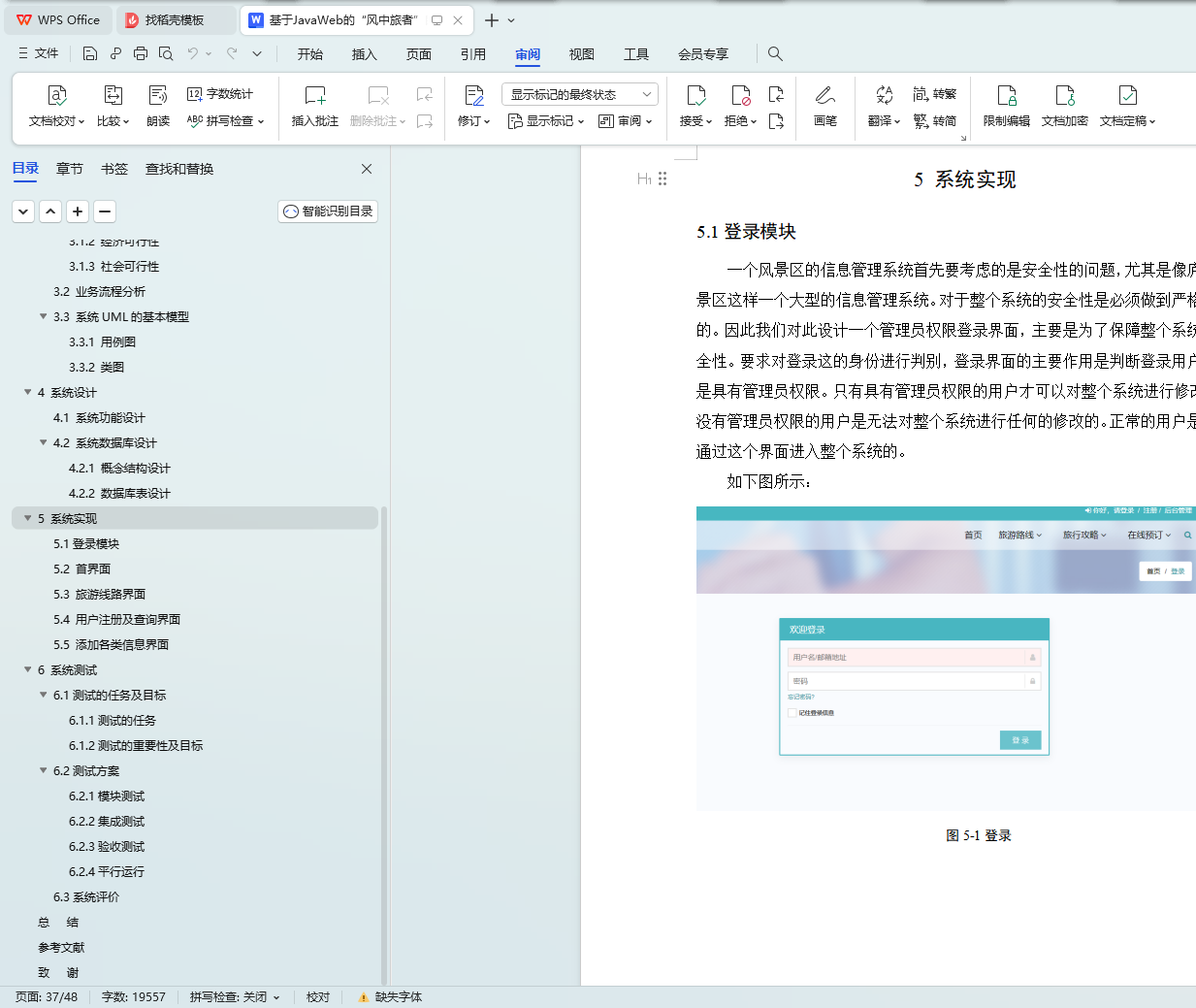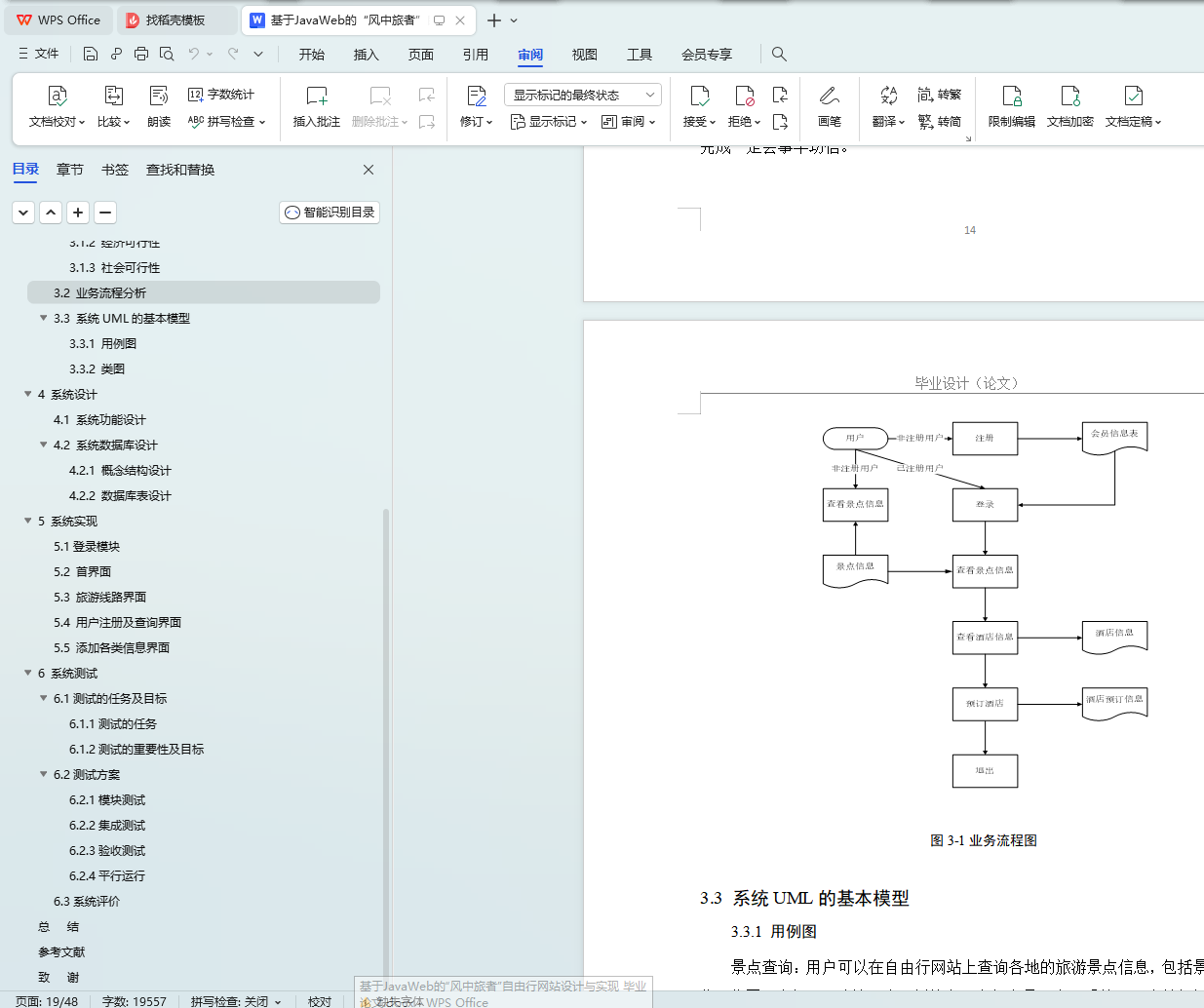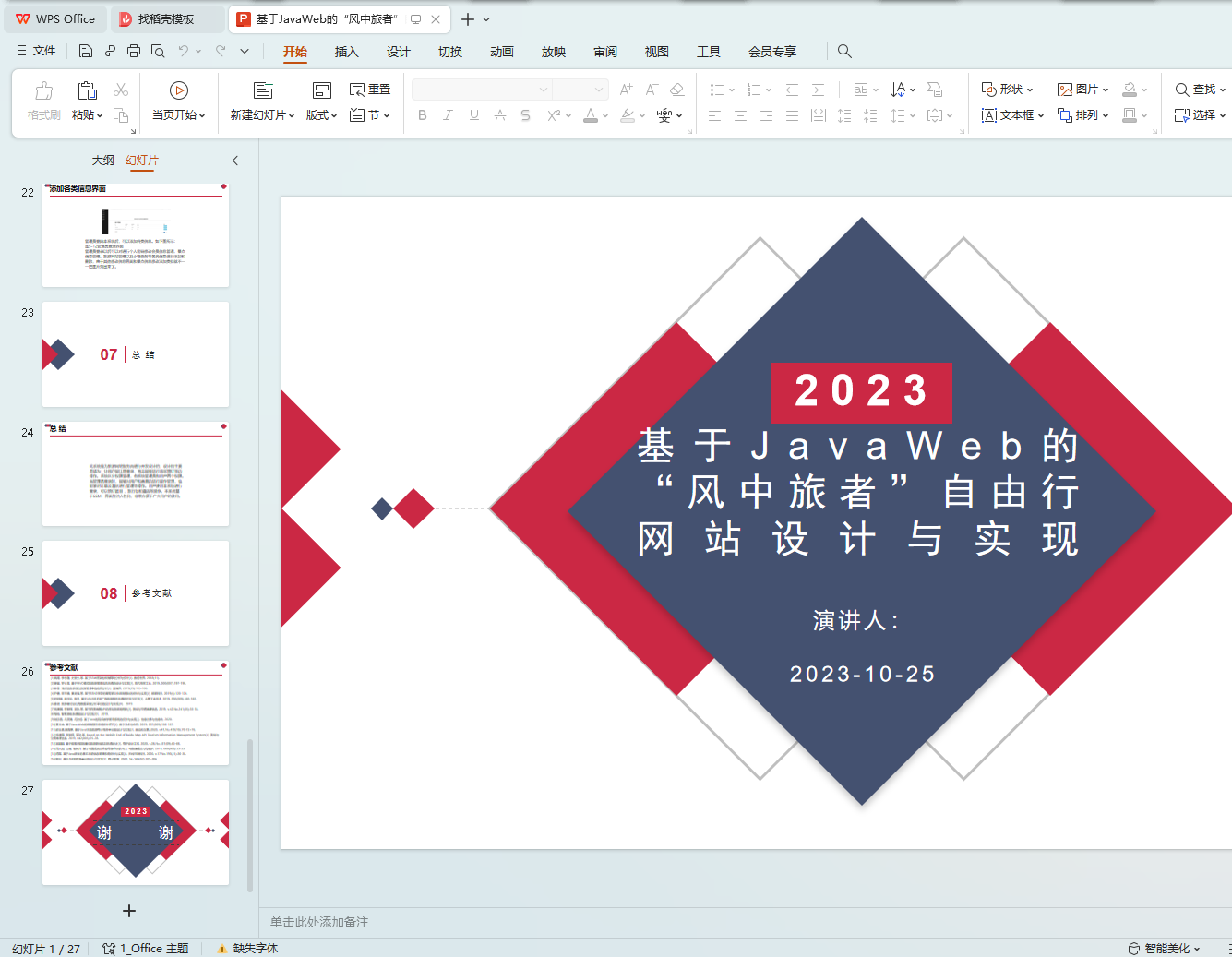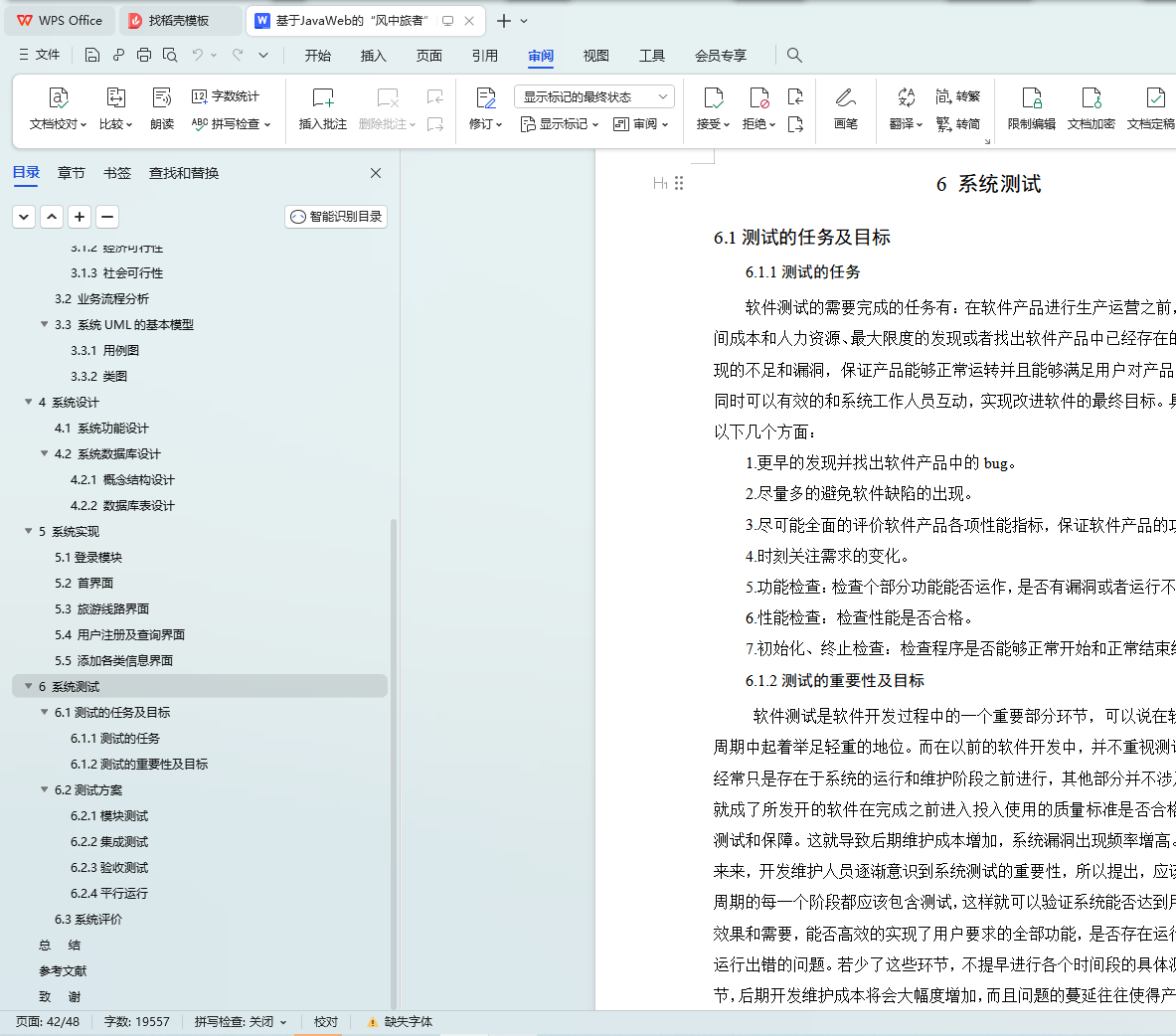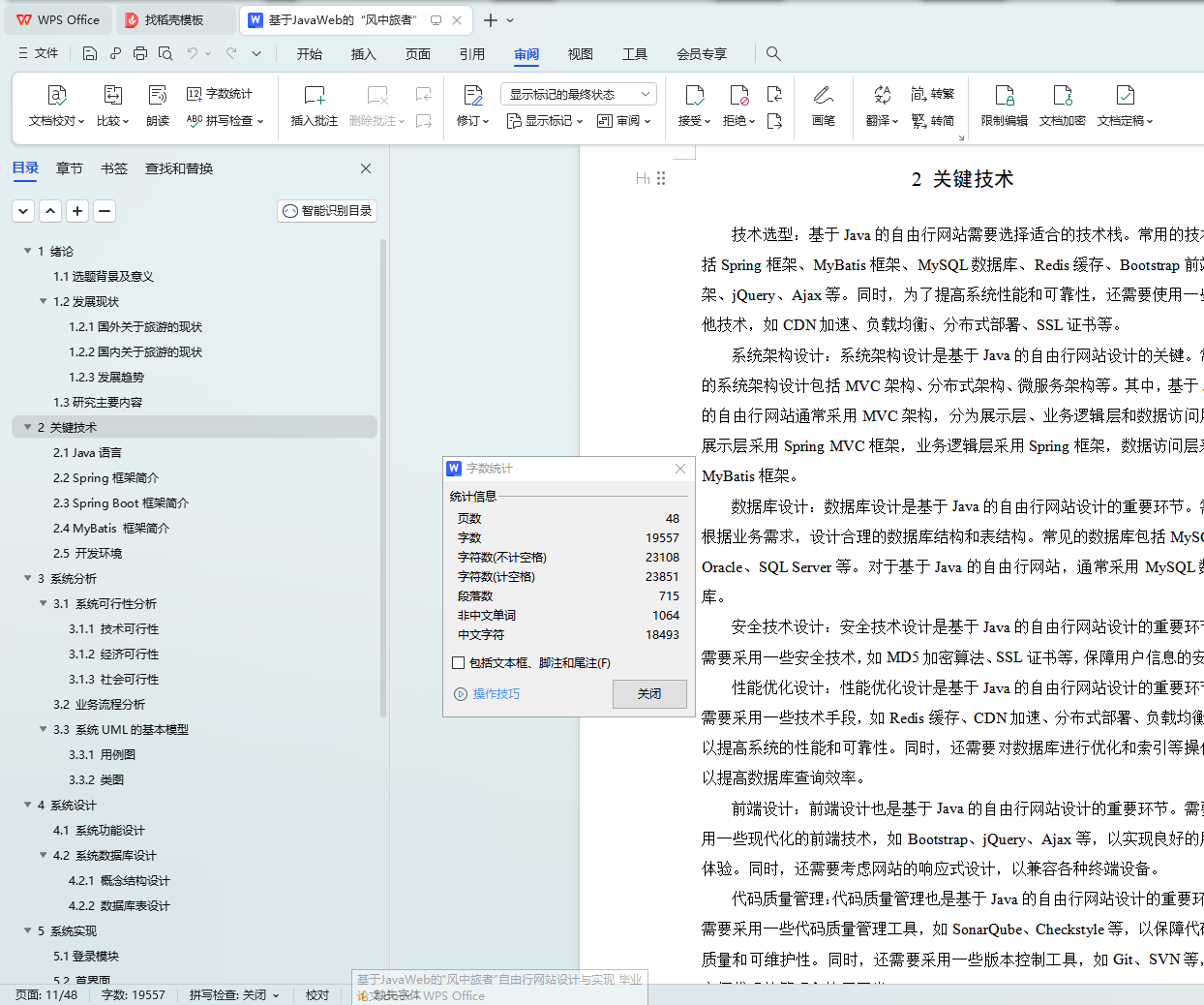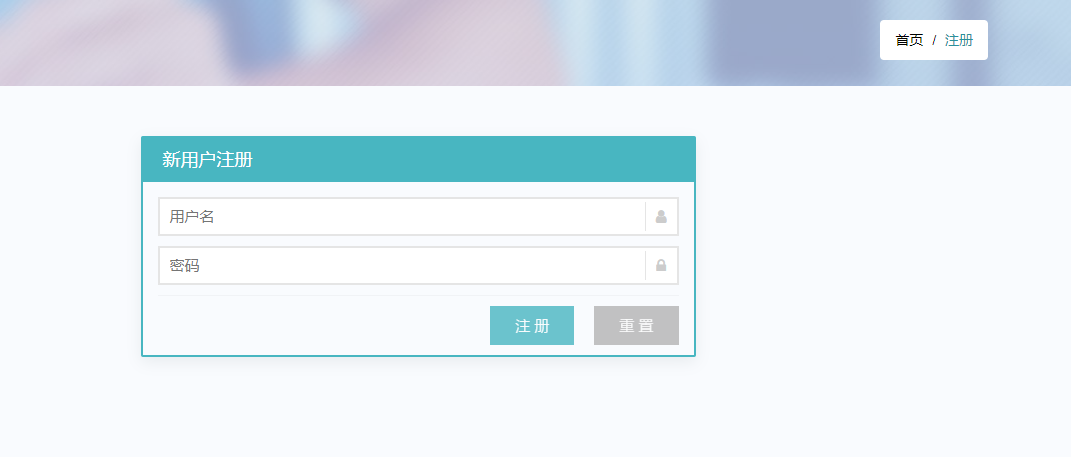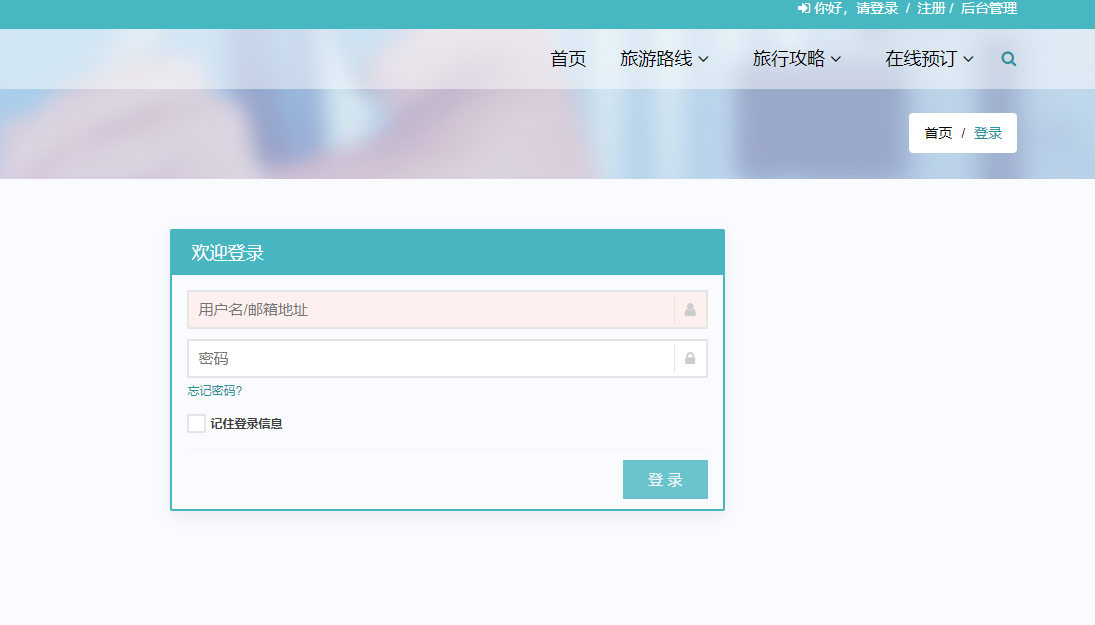基于JavaWeb的“风中旅者”自由行网站设计与实现
摘要:本论文基于Java语言和面向对象编程思想,设计了一款具有良好用户体验和高性能的自由行网站。在功能设计方面,本论文实现了用户模块、景点模块、酒店模块、旅游路线模块、订单模块和支付模块。其中,用户模块包括用户注册、登录、修改个人信息、查看订单等功能;景点模块展示各个景点的详细信息,包括景点介绍、门票价格、开放时间等;酒店模块展示各个酒店的详细信息,包括酒店介绍、房型及价格、设施服务等;旅游路线模块展示各个旅游路线的详细信息,包括路线介绍、行程安排、费用预算等;订单模块包括用户在网站上下单,包括景点门票、酒店预订、旅游路线等;支付模块支持在线支付和线下支付,包括支付宝、微信支付等。在技术实现方面,本论文采用了Bootstrap、jQuery、Ajax等前端技术,Java、Spring Boot、MyBatis、MySQL等后端技术。
综上所述,本论文设计的基于Java的自由行网站具有较高的实用性和可操作性,适合于旅游行业的实际应用。同时,本论文的设计思路和技术实现也可为其他网站的设计和开发提供借鉴和参考。
关键词:自由行网站;旅游系统;自由行网站设计;Spring Boot;Java
Abstract:Based on Java language and object-oriented programming ideas, this paper has designed a travel website with good user experience and high performance. In terms of functional design, this paper implements the user module, scenic spot module, hotel module, tourist route module, order module and payment module. Among them, the user module includes user registration, login, modify personal information, view orders, and other functions; the detailed information of each scenic spot, including scenic spot introduction, ticket price, opening time, etc.; the hotel module displays the detailed information of each hotel, including hotel introduction, room type and price, facility service, etc.; the tourist route module displays the detailed information of each tourist route, including route introduction, itinerary arrangement and cost budget; the order module includes the user orders on the website, including scenic spot tickets, hotel booking, tourist route, etc.; The payment module supports online payment and offline payment, including Alipay, WeChat payment, etc.
In terms of technical implementation, this paper adopts front-end technologies such as Bootstrap, jQuery, Ajax, and back-end technologies such as Java, Spring Boot, MyBatis, and MySQL. In conclusion, the Java-based tourism website designed in this paper has high practicability and operability, which is suitable for practical applications in the tourism industry. At the same time, the design idea and technical realization of this paper can also provide reference for the design and development of other websites.
Keywords: Travel website; travel system; travel website design; Spring Boot; Java
目 录
1 绪论
1.1选题背景及意义
1.2发展现状
1.2.1国外关于旅游的现状
1.2.2国内关于旅游的现状
1.2.3发展趋势
1.3研究主要内容
2 关键技术
2.1 Java语言
2.2 Spring框架简介
2.3 Spring Boot 框架简介
2.4 MyBatis 框架简介
2.5 开发环境
3 系统分析
3.1 系统可行性分析
3.1.1 技术可行性
3.1.2 经济可行性
3.1.3 社会可行性
3.2 业务流程分析
3.3 系统UML的基本模型
3.3.1 用例图
3.3.2 类图
图3-9类关系图
4 系统设计
4.1 系统功能设计
4.2 系统数据库设计
4.2.1 概念结构设计
4.2.2 数据库表设计
5 系统实现
5.1登录模块
5.2 首界面
5.3 旅游线路界面
5.4 用户注册及查询界面
5.5 添加各类信息界面
6 系统测试
6.1测试的任务及目标
6.1.1测试的任务
6.1.2测试的重要性及目标
6.2测试方案
6.2.1模块测试
6.2.2集成测试
6.2.3验收测试
6.2.4平行运行
6.3系统评价
总 结
参考文献
致 谢
